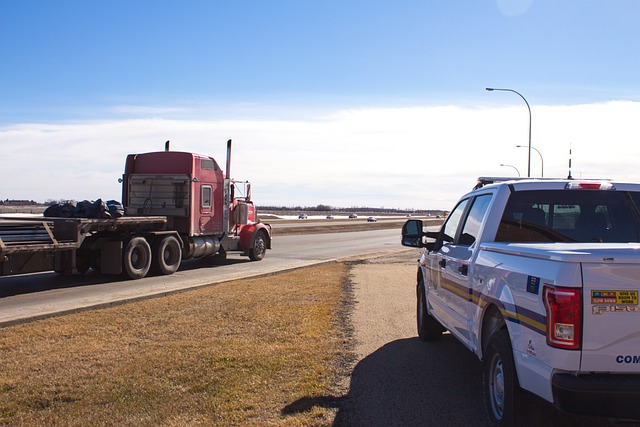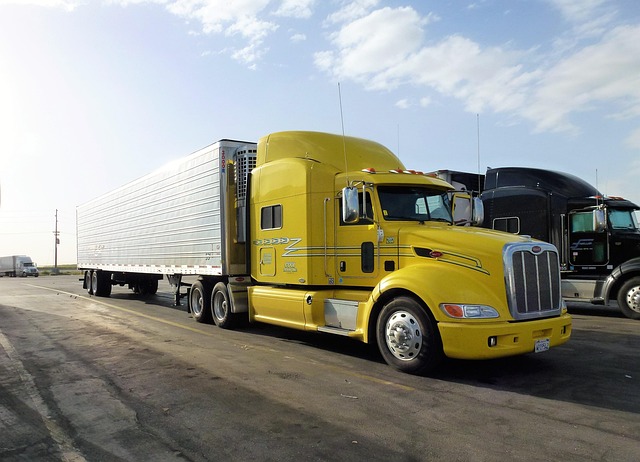Registering a car in California involves a straightforward process that requires understanding key steps, from vin verification to document collection. This comprehensive guide breaks down each phase, ensuring you’re prepared for a smooth registration experience. We’ll walk you through preparing for and conducting vin verification, gathering essential documents, and submitting your application. By following these steps, you’ll be on your way to securing your California car registration in no time.
- Understanding the California Car Registration Process
- Preparing for Vin Verification: What You Need to Know
- Steps Involved in Conducting a Vehicle Identification Number (VIN) Check
- Gathering Required Documents for California Car Registration
- Submitting Your Application and Receiving Your Registration Papers
Understanding the California Car Registration Process

In California, registering a car involves several steps designed to ensure vehicle safety and identity. The process begins with gathering essential documents, including proof of ownership, insurance, and identification. Once these are prepared, drivers can proceed with the core registration at a local Department of Motor Vehicles (DMV) office or, for added convenience, utilize online services. A key component of this process is the vin verification, which confirms the vehicle’s unique identifying number (VIN) to prevent fraud.
While traditional vin inspection is typically conducted at a fixed DMV location, modern alternatives like mobile vin verifier services offer added flexibility. These mobile options allow drivers to verify their VIN from the comfort of their home or office, streamlining the initial registration process and making it more accessible for California residents.
Preparing for Vin Verification: What You Need to Know

Preparing for VIN verification is a crucial step in registering your car in California. Before scheduling an appointment, ensure you have all necessary documents, including the vehicle’s registration certificate from the previous state (if applicable), proof of insurance, and your driver’s license. The California Department of Motor Vehicles (DMV) will also require a valid inspection report from a certified mechanic or mobile VIN verifier. This process involves a detailed examination of your car’s history and condition, so having all your documents in order will streamline the registration process.
Additionally, familiarize yourself with what a VIN verification entails. It’s not just about checking the vehicle identification number (VIN) against a database; it includes inspecting critical components like brakes, lights, tires, and emissions systems to ensure they meet safety standards. Consider utilizing mobile VIN inspection services for added convenience, as these experts can perform the verification at your location, saving you time and effort. This approach is especially beneficial if you have a busy schedule or face challenges transporting your vehicle to a DMV office.
Steps Involved in Conducting a Vehicle Identification Number (VIN) Check

Conducting a Vehicle Identification Number (VIN) check is an integral part of registering your car in California. This process ensures that the vehicle’s details match its identification number, which is crucial for verification purposes. Here’s how to navigate this step:
1. Obtain the VIN: The first step involves locating and recording the unique 17-character Vehicle Identification Number (VIN) found on the vehicle’s certificate of title or registration, engine, or transmission. For a quick and convenient mobile vin inspection, many services offer remote verification using your smartphone.
2. Use an Online Tool: California offers several online resources for VIN verification. The official California Department of Motor Vehicles (DMV) website provides tools to check the status of a vehicle’s history, including any reported accidents or outstanding issues. Alternatively, third-party websites and mobile apps specialized in vin inspection can also perform this check, often with additional details like previous owners and maintenance records.
Gathering Required Documents for California Car Registration

Before you begin the registration process, it’s crucial to gather all the essential documents required by the California Department of Motor Vehicles (DMV). This includes your vehicle’s Vehicle Identification Number (VIN), which serves as a unique identifier for your car and is crucial for accurate record-keeping. Conducting a VIN inspection ensures that the details match those on file, streamlining the registration process.
Additionally, you’ll need proof of ownership, typically through a purchase agreement or title document. Other necessary paperwork may include valid identification such as a driver’s license or passport, proof of insurance, and any applicable fees. For added convenience, some mobile VIN verification services offer an easy way to check your vehicle’s history and ensure all information is accurate before you head to the DMV, saving time and potential headaches.
Submitting Your Application and Receiving Your Registration Papers

After completing your application for car registration, it’s time to submit all the required documents and wait for the necessary verifications. This process typically involves a vin inspection or vin verification, ensuring the vehicle’s authenticity and history. In California, you can opt for traditional vin inspection at a designated facility or choose a more convenient option like a mobile vin inspection. The latter allows a professional to come to your location, perform the vin verification, and process your registration paperwork on-site.
Once your application has been approved, the California Department of Motor Vehicles (DMV) will issue your registration papers. You’ll receive these documents in the mail, or, with a mobile vin inspection service, you can get them right away, streamlining the entire registration process. Remember to keep these papers secure and up-to-date for all future vehicle transactions and DMV visits.
Registering a car in California involves several key steps, including successful vin verification. By understanding the process, preparing the necessary documents, and following the outlined procedures, you can ensure a smooth registration experience. Remember to keep your registration papers secure and up-to-date for hassle-free future transactions. Happy motoring!
